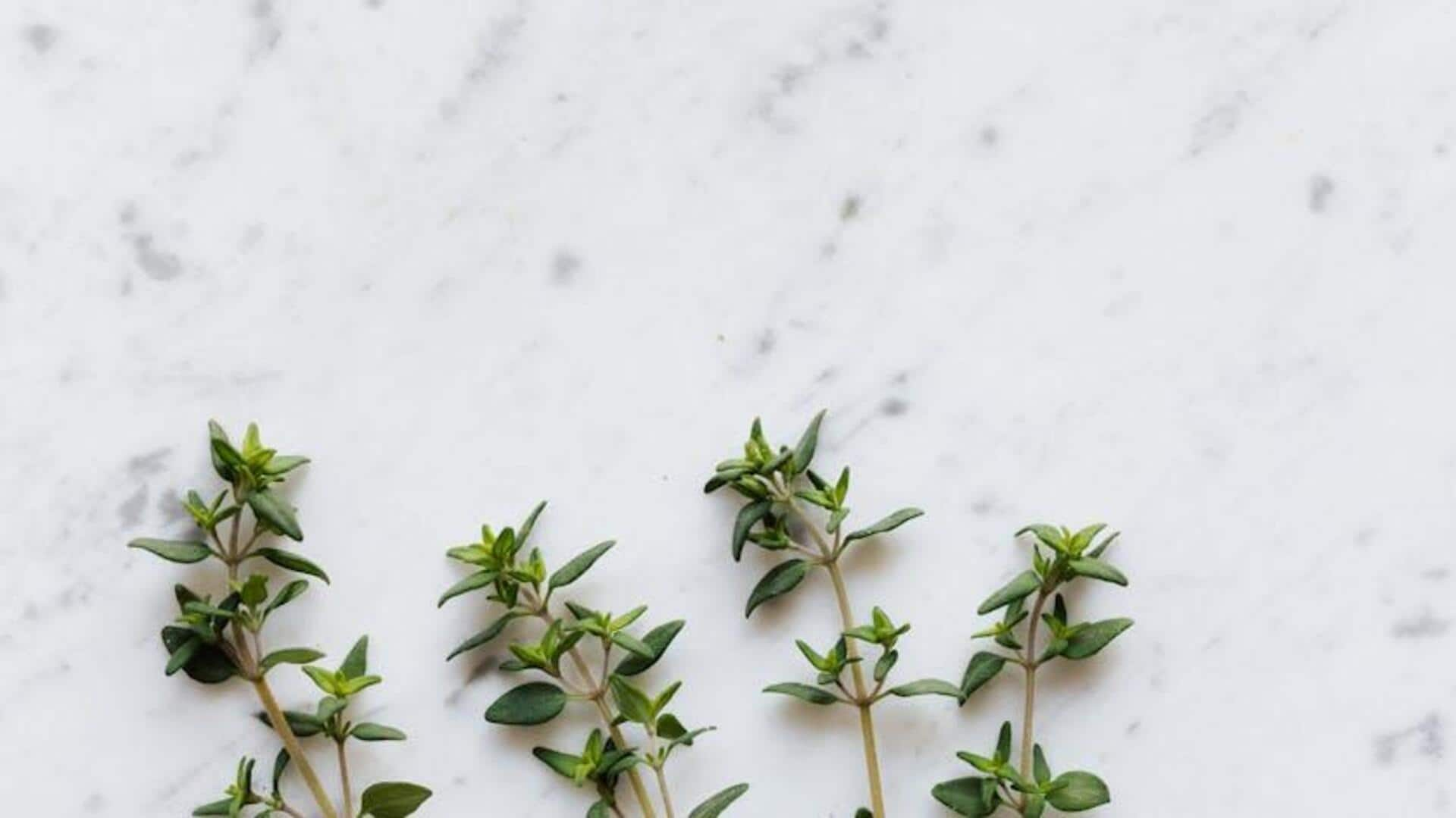
Thriving thyme: 5 essential cultivation tips
What's the story
Thyme is a culinary powerhouse, this humble herb adds depth and flavor to a wide range of dishes. Growing your own thyme can be a rewarding experience, but it does require a bit of a green thumb and some know-how. This article gives you five crucial tips for growing thyme like a pro. Say goodbye to wilted, unhappy plants and hello to a thriving harvest!
Variety choice
Select the right variety
Choosing the right thyme varieties, each with its distinct flavor and growth habit, can make all the difference in your gardening success. Common thyme (Thymus vulgaris) and lemon thyme (Thymus citriodorus) are favored for their robust flavors. Picking a variety that matches your climate and taste buds is the secret to a successful thyme garden, promising culinary delight and healthy growth.
Sunlight needs
Provide adequate sunlight
Thyme needs a minimum of six hours of full sun daily to thrive. A sunny spot is essential for strong growth and for developing the herb's fragrant flavor. If you are growing thyme indoors, place it near a south-facing window or use additional grow lights to provide the required sunlight. This sun exposure is critical for the plant's growth and greatly enhances its health and flavor.
Soil requirements
Ensure well-draining soil
Thyme needs well-draining soil to prevent root rot caused by too much moisture. Incorporating organic matter such as compost or perlite enhances both drainage and fertility. A slightly acidic to alkaline soil pH (between six and eight) is optimal for thyme, as it facilitates nutrient absorption. By maintaining this delicate balance of soil conditions, you can bolster your plant's health and growth, paving the way for a thriving thyme garden.
Watering technique
Water sparingly
The most common mistake people make when growing thyme is overwatering. This Mediterranean herb thrives in dry conditions and should only be watered when the top inch of soil feels dry to the touch. In hot weather, you may need to water it more often, but always check the soil before you do it.
Pruning practice
Prune regularly
Regular pruning not only keeps the plant looking neat and compact but also promotes bushier growth by preventing legginess. Cutting back one-third of the plant's height after it blooms encourages new growth, providing a steady supply of fresh leaves for cooking throughout the season. By following this simple practice, you can keep your thyme looking attractive while also promoting a healthier, more productive herb garden.